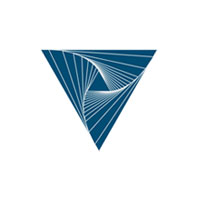My work focuses on the interface between large-scale scientific visualization and high performance computing. Large-scale visualization often requires algorithms and data structures to run on hardware and software that is not primarily meant for doing 3D graphics. At the same time, for exploratory visualization, extremely low latency is crucial. My research focuses on developing visualization and 3D rendering algorithms that achieve the highest possible image fidelity, while maintaining real-time user interaction, and running on supercomputers or data center multi-GPU workstations. A data type I focus on specifically is adaptive mesh refinement (AMR) data as output by many modern computational fluid dynamics codes. This data, while omnipresent in the computational sciences, poses a number of challenges for interactive rendering algorithms. My research is concerned with high-quality interpolation on time-varying AMR grids, and with fast Monte Carlo rendering of such data. Also see the website of the VTV-AMR project: https://vtvamr.github.io.
Selected publications
- Stefan Zellmann, Qi Wu, Kwan-Liu Ma, Ingo Wald (2023), Memory-Efficient GPU Volume Path Tracing of AMR Data Using the Dual Mesh Computer Graphics Forum (Proceedings of Eurographics Conference on Visualization (EuroVis) 2023) (accepted). Preprint.
- Stefan Zellmann, Ingo Wald, Joao Barbosa, Serkan Demirci, Alper Sahistan, Ugur Güdükbay (2022), Hybrid Image-/Data-Parallel Rendering Using Island Parallelism, The 12th IEEE Symposium on Large Data Analysis and Visualization (LDAV 2022). DOI: 10.1109/LDAV57265.2022.9966396, Preprint.
- Stefan Zellmann, Daniel Seifried, Nate Morrical, Ingo Wald, Will Usher Jamie P. Law-Smith, Stefanie Walch-Gassner, André Hinkenjann (2022), Point Containment Queries on Ray tracing Cores for AMR Flow Visualization Computing in Science and Engineering (CiSE), Special Issue: Hardware-Accelerated Ray Tracing for Scientific Applications, Volume: 24, Issue: 2 (Mar/Apr 2022). DOI: 10.1109/MCSE.2022.3153677.
- Ingo Wald, Nate Morrical, Stefan Zellmann (2022), A Memory Efficient Encoding for Ray Tracing Large Unstructured Data, IEEE Transactions on Visualization and Computer Graphics, Volume: 28, Issue: 1, Jan 2022, pp. 583–592. DOI: 10.1109/TVCG.2021.3114869, Preprint.
- Stefan Zellmann Jürgen P. Schulze, Ulrich Lang (2021), Binned k-d Tree Construction for Sparse Volume Data on Multi-Core and GPU Systems, IEEE Transactions on Visualization and Computer Graphics, Volume: 27, Issue: 3, Jan 2022, pp. 1904–1915. DOI: 10.1109/TVCG.2019.2938957.
- Ingo Wald, Stefan Zellmann, Will Usher, Nate Morrical, Ulrich Lang, Valerio Pascucci (2021), Ray Tracing Structured AMR Data Using ExaBricks, IEEE Transactions on Visualization and Computer Graphics, Volume: 27, Issue: 2, Jan 2022, pp. 625–634. DOI: 10.1109/TVCG.2020.3030470, Preprint.
- Stefan Zellmann, Martin Weier, Ingo Wald (2020), Accelerating Force-Directed Graph Drawing with RT Cores, IEEE Visualization Conference (VIS). DOI: 10.1109/VIS47514.2020.00026, Preprint.
- Stefan Zellmann, Nate Morrical, Ingo Wald, Valerio Pascucci (2020), Finding Efficient Spatial Distributions for Massively Instanced 3-d Models, Eurographics Symposium on Parallel Graphics and Visualization (EGPGV 2020). DOI: 10.2312/pgv.20201070, Preprint.
- Stefan Zellmann, Matthias Hellmann, Ulrich Lang (2019), A Linear Time BVH Construction Algorithm for Sparse Volumes, IEEE Pacific Visualization Symposium (PacificVis). DOI: 10.1109/PacificVis.2019.00033, Preprint.
- Stefan Zellmann, Daniel Wickeroth, Ulrich Lang (2017), Visionaray: A Cross-Platform Ray Tracing Template Library, IEEE 10th Workshop on Software Engineering and Architectures for Realtime Interactive Systems (SEARIS). DOI: 10.1109/SEARIS41720.2017.9183547.
